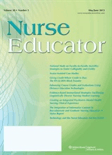
Nurse Educator
Scope & Guideline
Advancing Nursing Education with Impactful Insights.
Introduction
Aims and Scopes
- Innovative Teaching Strategies:
The journal emphasizes the development and evaluation of novel pedagogical approaches, including simulation, gamification, and online learning, to enhance student engagement and learning outcomes. - Diversity, Equity, and Inclusion:
A core focus is on integrating diversity, equity, and inclusion principles into nursing curricula, aiming to prepare culturally competent nurses who can effectively serve diverse populations. - Evidence-Based Practice:
The journal promotes the incorporation of evidence-based practices in nursing education, ensuring that curricula are grounded in the latest research findings and clinical guidelines. - Interprofessional Education:
It supports collaboration between nursing and other healthcare disciplines to foster teamwork and improve patient outcomes through shared learning experiences. - Student Well-Being and Resilience:
Recognizing the challenges faced by nursing students, the journal addresses strategies to promote mental health, resilience, and well-being in nursing education. - Technology Integration:
The use of technology, including virtual simulations and AI tools, is a recurring theme, highlighting its role in enhancing learning experiences and clinical preparedness. - Curriculum Development and Assessment:
The journal also focuses on effective curriculum design and assessment strategies to ensure nursing programs meet educational standards and prepare graduates for practice.
Trending and Emerging
- Integration of Social Determinants of Health:
There is an increasing focus on teaching social determinants of health within nursing curricula, preparing students to address health disparities and the broader context of patient care. - Mental Health and Wellness Initiatives:
A growing emphasis on mental health education and strategies to support the well-being of nursing students is evident, reflecting a broader awareness of the importance of mental health in healthcare. - Use of Simulation and Virtual Learning:
The integration of simulation and virtual learning tools in nursing education is trending, particularly in response to the COVID-19 pandemic, which has accelerated the adoption of technology in teaching. - Cultural Competence and Sensitivity Training:
Training in cultural competence and sensitivity is becoming increasingly prominent, ensuring that future nurses can provide equitable care to diverse populations. - Focus on Faculty Development and Support:
There is a notable trend towards enhancing faculty development programs to support educators in adopting innovative teaching methods and addressing challenges in nursing education. - Artificial Intelligence in Education:
The use of AI tools and technologies in nursing education is emerging as a significant theme, with research exploring their potential to enhance teaching and learning processes.
Declining or Waning
- Traditional Lecture-Based Teaching:
There is a noticeable decrease in articles focusing on traditional lecture methods as more innovative and interactive approaches gain favor among educators. - Single-Dimensional Evaluations:
The emphasis on standardized testing and single-dimensional assessments is diminishing, giving way to more holistic and formative evaluation techniques that consider multiple competencies. - Focus on Content Delivery:
There is a waning focus on mere content delivery, with a shift towards experiential learning and application of knowledge in real-world settings. - Isolation in Nursing Education:
The trend towards collaborative and interprofessional education indicates a decline in isolated nursing education practices that do not involve other health disciplines. - Static Curriculum Models:
Static and rigid curriculum models are less prevalent, as there is a growing recognition of the need for agile curricula that can adapt to changing healthcare needs and societal demands.
Similar Journals
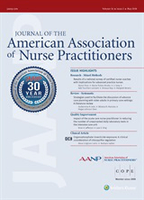
Journal of the American Association of Nurse Practitioners
Transforming Practice Through Cutting-Edge ResearchJournal of the American Association of Nurse Practitioners is a leading publication dedicated to the advancement of nurse practitioner research, education, and practice. Published by Lippincott Williams & Wilkins, this journal focuses on disseminating innovative findings, clinical approaches, and evidence-based practices that enhance patient care and the profession's stature. With an ISSN of 2327-6886 and an E-ISSN of 2327-6924, the journal has established a significant presence within the academic community, boasting a 2023 Q2 ranking in Nursing and a Q3 in the broader category of Medicine (miscellaneous). Its indexed position—ranked #70 out of 139 in General Nursing by Scopus—reflects its commitment to quality and relevance in the field. Open access options further ensure that research findings are readily available to practitioners, educators, and students, facilitating a greater impact on patient outcomes and nursing practices. With content spanning from 2013 to 2024, the journal continues to serve as a pivotal resource for those endeavoring to enhance the expertise of nurse practitioners worldwide.

NURSE PRACTITIONER
Bridging Research and Practice in HealthcareNURSE PRACTITIONER, published by Lippincott Williams & Wilkins, is a premier journal dedicated to advancing the field of nursing and health care practice. Since its inception in 1975, this journal has provided a vital platform for the dissemination of research, clinical insights, and interdisciplinary scholarship, bridging gaps in nursing education and practice. With an impact factor reflective of its focus on evidence-based practice, NURSE PRACTITIONER is positioned in the Q3 category of Nursing (miscellaneous) and Q4 in Medicine (miscellaneous) for 2023, indicating its growing relevance in the academic community. Each issue features a range of articles from original research to review papers, designed to empower nurse practitioners and enrich educational methods. Although it does not currently offer open access, the journal remains a critical resource for professionals seeking to stay informed on innovative practices and the latest advancements in the field, making it indispensable for researchers, practitioners, and students alike. For more information, visit the publisher's website at Two Commerce Sq, 2001 Market St, Philadelphia, PA 19103.
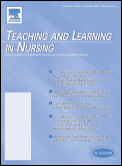
Teaching and Learning in Nursing
Elevating Nursing Education Through Research and InsightTeaching and Learning in Nursing, an esteemed publication from ELSEVIER SCIENCE INC, serves as a cornerstone for advancing nursing education and practice. With its ISSN 1557-3087 and E-ISSN 1557-2013, this journal offers a platform for the dissemination of innovative research and best practices in nursing. It is recognized for its significant contributions within the categories of Fundamentals and Skills, Leadership and Management, and Research and Theory, consistently ranking within the top quartile in these essential areas for 2023. The journal's strategic focus on enhancing nursing pedagogy makes it an invaluable resource for researchers, educators, and practitioners alike, striving to bridge the gap between theory and application. Although it currently does not offer Open Access, its robust impact factor and critical insights foster a dynamic dialogue within the nursing community, making it a must-read for anyone dedicated to the evolution of nursing education. With an engaging scope that covers the latest trends and challenges in nursing pedagogy, it aims to equip the next generation of nursing professionals with the tools necessary for excellence in patient care and professional leadership. Explore this journal to stay updated on cutting-edge practices and contribute to the collective knowledge in nursing education.
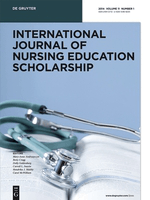
International Journal of Nursing Education Scholarship
Unlocking potential in nursing education through scholarship.International Journal of Nursing Education Scholarship is a crucial academic platform dedicated to advancing the field of nursing education through rigorous research and scholarship. Published by WALTER DE GRUYTER GMBH in Germany, this journal serves as a key resource for researchers, educators, and practitioners in nursing and related educational fields. With an impressive impact factor and a strong Scopus ranking, notably Rank #44 in General Nursing, the journal occupies a respected position within the Q2 category in both the Education and Nursing sectors. Its open access policy enhances the dissemination of critical findings, facilitating broader access to high-quality nursing education research. Spanning from 2003 to 2025, this publication is committed to fostering innovation and excellence in nursing education, promoting evidence-based practices that ultimately benefit healthcare systems worldwide. As a vital resource for academia and practice, International Journal of Nursing Education Scholarship continuously encourages the discourse on best practices and emerging trends in nursing education.
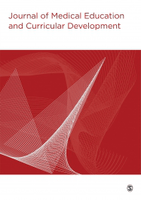
Journal of Medical Education and Curricular Development
Exploring Cutting-Edge Strategies in Medical TrainingJournal of Medical Education and Curricular Development is a pioneering open-access journal published by SAGE Publications Ltd, dedicated to advancing the field of medical education. With an ISSN of 2382-1205, this journal has been committed to providing high-quality, peer-reviewed research since 2014. It serves as a vital platform for educators, researchers, and practitioners interested in innovative teaching methodologies, curriculum development, and assessment strategies in medical education. The journal not only aims to disseminate impactful research but also encourages scholarly dialogue on best practices and emerging trends in the field. By offering unrestricted access to published articles, it ensures that knowledge is widely accessible, promoting collaboration and improvement in medical training worldwide. As a key resource for professionals and academics alike, it supports the ongoing evolution of educational practices that directly influence healthcare outcomes.
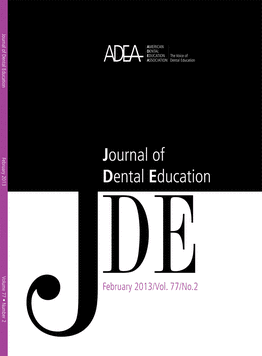
JOURNAL OF DENTAL EDUCATION
Pioneering Research in Dental AcademiaWelcome to the JOURNAL OF DENTAL EDUCATION, a leading peer-reviewed publication in the fields of dentistry and education, published by Wiley. Established in 1946, this journal remains at the forefront of dental education research, providing critical insights and advancements that shape the future of dental practice and academia. With an impressive impact factor and a ranking in the Q2 quartile for Dentistry, Education, and Medicine, it stands as a vital resource for professionals, educators, and students alike. The journal encompasses a wide array of topics, including innovative teaching methodologies, curriculum development, and evidence-based practice in dental education. Although it does not offer open access, the journal's content is accessible through various academic databases, ensuring researchers can stay informed on the latest trends and findings. As it continues to evolve, the JOURNAL OF DENTAL EDUCATION remains committed to fostering excellence in dental education and contributes significantly to the academic discourse in this essential field.

AEM Education and Training
Elevating knowledge and practice in emergency education.AEM Education and Training is a leading peer-reviewed journal published by WILEY, focusing on the intersection of education, emergency medicine, and nursing, with a commitment to advancing knowledge and practice in these critical fields. Launched in 2017, this journal has quickly established itself as a key resource, as evidenced by its impressive Q2 ranking in both Education and Emergency Medicine, and a top-tier Q1 ranking in Emergency Nursing as of 2023. The journal aims to disseminate high-quality research that enriches educational practices and improves clinical outcomes, serving as a vital platform for healthcare educators and practitioners. With the growing importance of effective training in emergency settings, AEM Education and Training plays an essential role in shaping future leaders in health education and patient care. Researchers, professionals, and students will find an array of insightful articles that address contemporary challenges and innovations in their fields. Although currently not an open-access journal, its findings contribute significantly to the broader discourse in educational practices and emergency care.
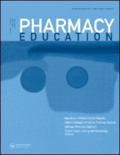
PHARMACY EDUCATION
Innovating practices to elevate pharmaceutical training.PHARMACY EDUCATION, an esteemed journal published by the INTERNATIONAL PHARMACEUTICAL FEDERATION, is dedicated to advancing the field of pharmacy education through high-quality research, reviews, and innovative practices. With an ISSN of 1560-2214 and an E-ISSN of 1477-2701, this journal provides a vital platform for educators, researchers, and professionals to discuss contemporary issues and opportunities within pharmaceutical education. Recognized for its relevance, it holds a Q4 ranking in Education and Q3 in both Pharmaceutical Science and Pharmacy as of 2023. Despite its Scopus rankings reflecting a growing niche, with positions such as 30/45 for Pharmacy in Health Professions, it showcases a commitment to nurturing the next generation of pharmacy practitioners. As a crucial resource for enhancing pharmacy curricula and pedagogical strategies, PHARMACY EDUCATION invites contributions from those dedicated to enriching educational methodologies and promoting excellence in pharmaceutical training. This journal plays an essential role in bridging academic research and practical application, encouraging the ongoing evolution in pharmacy education across the globe.
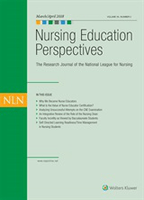
Nursing Education Perspectives
Enhancing Learning, Enriching CareNursing Education Perspectives is an esteemed peer-reviewed journal published by LIPPINCOTT WILLIAMS & WILKINS, focusing on the vital intersection of education and nursing practice. With an ISSN of 1536-5026 and an E-ISSN of 1943-4685, this journal has been serving the nursing education community since its inception in 2002 and will continue to do so until 2024. In 2023, it achieved a commendable Q2 ranking in Nursing and Q3 in both Education and Miscellaneous Medicine, reflecting its significant contribution to the academic landscape. Although it follows a traditional access model, the journal consistently aims to provide high-quality research, innovative pedagogical strategies, and best practices that can enhance nursing education globally. Given its position within the 49th percentile for General Nursing and Social Sciences, Nursing Education Perspectives is an essential resource for researchers, educators, and practitioners dedicated to advancing nursing training and education.
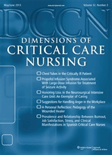
Dimensions of Critical Care Nursing
Empowering Nurses with Knowledge for High-Stakes EnvironmentsDimensions of Critical Care Nursing, published by Lippincott Williams & Wilkins, is a premier journal dedicated to advancing the knowledge and practices within the fields of critical care and emergency nursing. With a distinguished history dating back to 1982, this journal plays a vital role in disseminating cutting-edge research, clinical advancements, and educational resources aimed at enhancing patient care in high-stakes environments. The journal is ranked in the Q2 quartile for both Critical Care Nursing and Emergency Nursing, reflecting its significant impact on the nursing field, with Scopus rankings placing it at #11 in Critical Care Nursing and #14 in Emergency Nursing. Targeting a multidisciplinary audience of researchers, clinicians, and students, the journal serves as a critical platform for discussions surrounding innovative patient care strategies, evidence-based practices, and emerging trends in critical nursing. Although it is not an open-access journal, it provides valuable insights that are essential for shaping the future of nursing practice. Stay informed on the latest research and contribute to the evolving landscape of critical and emergency care through Dimensions of Critical Care Nursing.